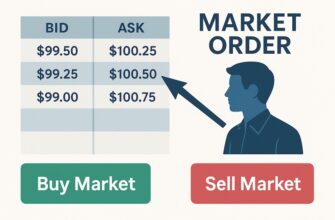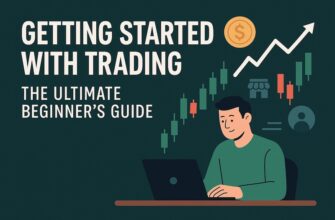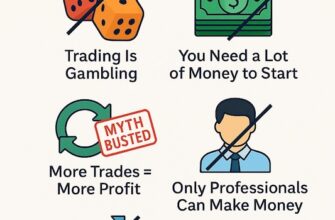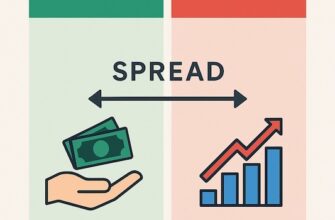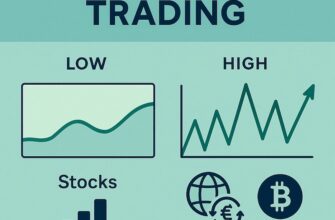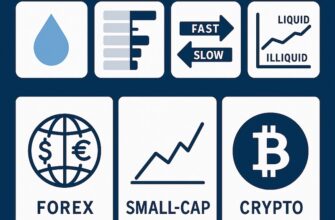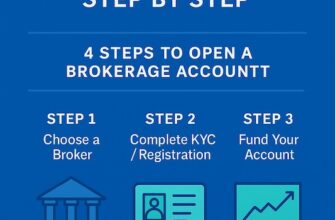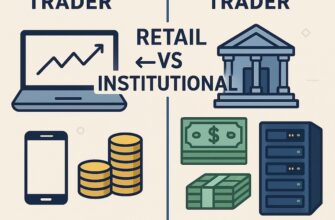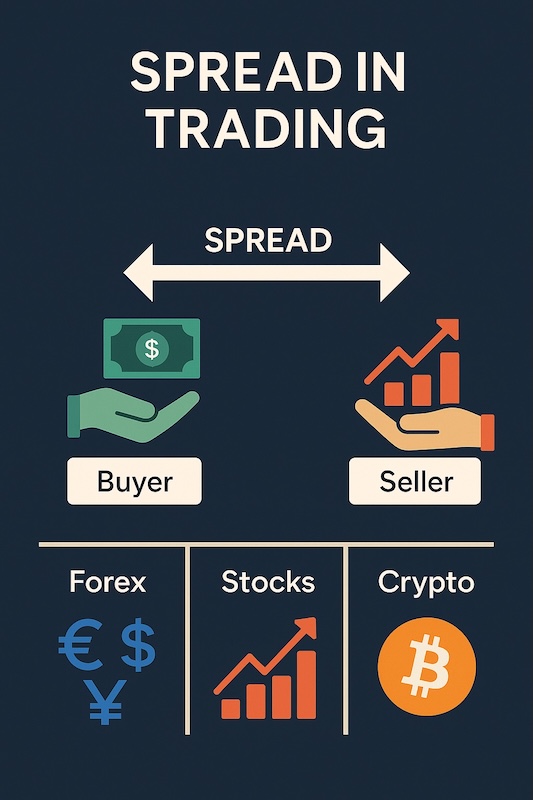
Every time you trade — whether it’s buying stocks, forex, or crypto — you pay a cost that isn’t always obvious. It’s called the spread. This small difference between the buying and selling price is the hidden “toll” you pay to access the market.
For beginners, understanding spread in trading is essential, because it explains why you never buy at the price you see quoted and why your position often starts slightly in the red. In this article, we’ll cover what a spread is, how it’s calculated, the difference between fixed and variable spreads, how spreads differ across markets, and why brokers rely on them to make money.
- What Is a Spread in Trading?
- How Spread Is Calculated (Example in Forex)
- Fixed vs Variable Spread
- Fixed Spread
- Variable Spread
- Spread in Forex vs Stocks vs Crypto
- Forex
- Stocks
- Crypto
- How Brokers Make Money from Spread
- Key Takeaways
- FAQ
- What is a good spread in forex?
- Do all brokers charge spreads?
- Why do spreads widen during news?
- Can I avoid spreads completely?
What Is a Spread in Trading?
A spread is the difference between the bid price (what buyers are willing to pay) and the ask price (what sellers are willing to accept) of an asset.
- Bid price: highest price buyers are offering.
- Ask price: lowest price sellers are demanding.
- Spread: Ask – Bid.
Example: If EUR/USD is quoted as 1.1000 (bid) / 1.1002 (ask), the spread is 0.0002, or 2 “pips.”
In simple terms:
- If you buy, you enter at the ask.
- If you sell, you enter at the bid.
- The gap between them is the spread, and that’s your cost to cross the market immediately.
This cost is why you often see a trade start slightly negative in your account: you’ve paid the spread upfront.
How Spread Is Calculated (Example in Forex)
The way spread is expressed depends on the market. Let’s look at forex, where the concept is easiest to illustrate.
Forex spread example:
Suppose EUR/USD is quoted at 1.1000 / 1.1002.
- Bid: 1.1000
- Ask: 1.1002
- Spread: 1.1002 – 1.1000 = 0.0002
In forex, that’s 2 pips (a pip is the fourth decimal place in most pairs).
For a trader with a standard lot (100,000 units of the base currency):
- 1 pip ≈ $10.
- So a 2-pip spread = $20 cost to enter and exit the trade.
Multiply this across multiple trades, and spreads become a significant expense for active traders.
In stocks: If Apple trades at $150.00 (bid) and $150.05 (ask), the spread is $0.05. For 100 shares, that’s $5 cost if you cross the market.
In crypto: If Bitcoin is quoted at $29,800 (bid) and $29,900 (ask), the spread is $100.
Fixed vs Variable Spread
Brokers and exchanges may offer fixed or variable spreads. Each has advantages and drawbacks.
Fixed Spread
- The spread stays constant, regardless of market conditions.
- Pros: Predictable trading costs, useful for beginners.
- Cons: Fixed spreads are usually wider to compensate for volatility, so in calm markets you may pay more than necessary.
Variable Spread
- The spread changes depending on liquidity, volatility, and market activity.
- Pros: Can be very tight in liquid conditions (e.g., 0.1–0.3 pips in major forex pairs).
- Cons: Spreads widen dramatically in volatile conditions, such as during news announcements.
Example: On EUR/USD, a broker may advertise spreads “from 0.1 pips.” During calm times, you pay almost nothing; during Non-Farm Payrolls release, it might spike to 5–10 pips.
Spread in Forex vs Stocks vs Crypto
Spreads vary widely across asset classes.
Forex
- Major pairs like EUR/USD or USD/JPY: tightest spreads (often <1 pip).
- Exotic pairs like USD/TRY or USD/ZAR: wider spreads due to lower liquidity and higher risk.
Stocks
- Large-cap stocks: tight spreads, sometimes just a penny.
- Small-cap or low-volume stocks: wider spreads, making them costlier to trade.
- ETFs tracking big indices (like SPY): extremely tight spreads thanks to high liquidity.
Crypto
- Bitcoin and Ethereum: relatively tight spreads on major exchanges.
- Altcoins: often very wide spreads, especially on low-volume tokens.
- Decentralized exchanges (DEXs): spreads depend on liquidity in the pool; low liquidity = huge spreads.
Rule of thumb: The more liquid the asset, the tighter the spread. The less liquid, the more you pay.
How Brokers Make Money from Spread
Spreads aren’t just random numbers — they’re part of how brokers and market makers earn revenue.
- Market makers Brokers or institutions quote both bid and ask, profiting from the difference. They take on risk by holding inventory, so the spread is their reward.
- Commission-free trading Many brokers advertise “zero commissions.” Instead, they mark up the spread slightly. You don’t see a commission line item, but you’re paying through wider spreads.
- ECN/STP brokers Some brokers pass market prices directly from liquidity providers and charge a small commission on top. In this model, spreads are often tighter, but you pay a per-trade fee.
- Volatility risk During volatile events, brokers may widen spreads to protect against slippage and risk.
Key point: No matter what the ad says, all brokers make money one way or another — either from spreads, commissions, or both.
Key Takeaways
- The spread in trading is the difference between bid and ask prices.
- It’s a built-in trading cost that affects all markets — forex, stocks, crypto.
- Spread = Ask – Bid. In forex, spreads are usually measured in pips.
- Fixed spreads are predictable but often wider; variable spreads can be cheaper but widen in volatile times.
- Spreads vary by market: tightest in major forex pairs and large-cap stocks, widest in exotic forex and low-volume crypto.
- Brokers make money through spreads, commissions, or both.
FAQ
What is a good spread in forex?
On major pairs like EUR/USD, a spread of 1 pip or less is considered good. Some brokers offer 0.1–0.3 pip spreads during liquid times.
Do all brokers charge spreads?
Yes. Even “zero-commission” brokers charge spreads. Some brokers use tight spreads plus a commission, while others widen the spread instead of charging direct fees.
Why do spreads widen during news?
Because volatility and uncertainty increase risk for liquidity providers. They protect themselves by quoting wider spreads until the market stabilizes.
Can I avoid spreads completely?
No. Spreads are inherent to how markets function. The best you can do is choose highly liquid assets and brokers with competitive pricing.

